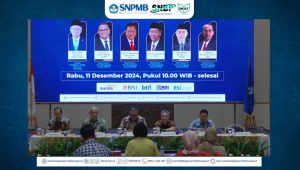Hydrocarbon compounds are known as the most dangerous pollutants in terrestrial and aquatic environments, posing a serious global problem. One source of pollutants for hydrocarbon compounds at sea is ship demolition activities in coastal areas. The activity produces large amounts of hydrocarbons.
The ship demolition activity causes sea pollution, which can be seen from the discoloration of seawater. The source of pollutants for this activity is diesel and old iron waste that follows the flow of sea waves. Every year, the activity spills around 1,500 tons of diesel.
Diesel is a complex hydrocarbon pollutant consisting of alkanes and aromatic compounds and is often reported as water and soil pollutant. Diesel pollutes the waters and land about 1.7 – 8.8 million tons every year. The Minister of Environment (2004) stated seawater quality standards for oil and fat parameters are 5 mg / L.
The contaminated sea with hydrocarbon compounds can damage the ecosystems and accumulate into marine biota. Diesel is also carcinogenic, mutagenic, and toxic to the immune system, which is a serious threat to organisms. Recovery of diesel-polluted waters can be made through physical, chemical, and biological methods. However, processing diesel physically and chemically is expensive and causes imperfect diesel decomposition.
Bioremediation is a cheap and more effective degradation technology for hydrocarbons due to easy operation and maintenance. It can also be applied to a large area. The main principle in this technology is utilizing the metabolism of microorganisms.
Microorganisms have enzymes to degrade and utilize diesel as a source of carbon and energy. Microorganisms use hydrocarbons as carbon substrates to increase population and degrade them into harmless compounds such as CO 2 and H 2 O. More than 30 types of bacteria can oxidize hydrocarbon compounds. Indigenous microorganisms isolated from the hydrocarbon-contaminated environment can be more efficient in degrading hydrocarbons.
Six bacterial isolates were obtained from diesel-polluted seawater in the coastal area of Tanjung Jati, Madura. Six bacterial isolates were then tested for characterization, toxicity, identification, and bacterial ability test to degrade diesel.
Based on the characterization, 50:50 identified as gram-negative and gram-positive bacteria. The results of the toxicity test showed 1 bacterial isolate can grow well on diesel contaminated media with a concentration of 5 percent, 10 percent, and 15 percent, while the other 5 isolates cannot grow well on diesel polluted media because the higher the concentration of diesel, the greater the osmotic pressure that causes lysis in bacterial cells.
Based on the toxicity test, one bacterial isolate has a high level of resistance to diesel because bacteria can use diesel as a source of carbon and energy to form new cells. Then, the isolate was identified based on bacterial and biochemical morphology, which refers to Bergey’s Manual of Determinative Bacteriology. The result identified the bacteria as Vibrio alginolyticus with 99 percent accuracy. The bacteria were then used for diesel biodegradation tests.
The results showed that V. alginolyticus could degrade diesel with an efficiency of 26.78 percent after 14 days of incubation. V. alginolyticus can degrade aliphatic hydrocarbons with Pentana (C 5 ) – Heneicosane (C 21 ) chains and aromatic compounds such as benzene and naphthalene.
It indicates V. alginolyticus can utilize diesel as a source of carbon and energy. On the other hand, V. alginolyticus can produce biosurfactants to reduce diesel surface tension and increase diesel solubility to be degraded. Furthermore, V. alginolyticus is a positive oxidase bacteria which can produce oxidase enzymes used to transport electron in the biodegradation process.
Based on the results of the research, it can be concluded that V. alginolyticus is a bacteria isolated from diesel-polluted seawater and has the potential to be a diesel degrading agent in polluted areas.
Author: Muhammad Fauzul Imron, S.T., M.T.
Note:
Details of this research available at:
https://www.sciencedirect.com/science/article/pii/S2352186418304942
Muhammad Fauzul Imron, Setyo Budi Kurniawan, Harmin Sulistiyaning Titah. 2019. Potential of bacteria isolated from diesel-contaminated seawater in diesel biodegradation. Environmental Technology & Innovation, Volume 14, May 2019, 100368.









